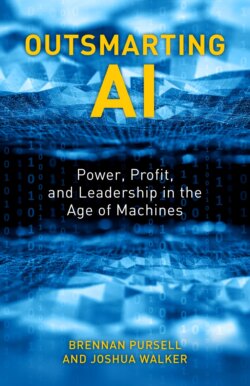Читать книгу Outsmarting AI - Brennan Pursell - Страница 26
На сайте Литреса книга снята с продажи.
AI in Plain English
ОглавлениеAI is cutting-edge, proliferating technology, devised by people, so it can be understood and used. There is no magic and no mystery involved. It cannot work wonders, but it can be applied to many, many tasks that we find in workplaces across the globe. As in other technological “revolutions,” research and development are leading the way.
In 2017, the number of AI-related patent applications worldwide rose to more than 55,000, up from 19,000 in 2013. Since 2013, as many patents have been awarded as in the preceding sixty years. IBM and Microsoft are leading the pack with applications, followed closely by Japanese and Korean tech companies. The 167 universities and research institutes that apply for patents are mostly in China, the United States, and South Korea.[1] In 2019, the United States awarded double the number of AI patents over the year before.
The patent explosion is following a similar trend in the publication of scientific papers. In 2016, there were three times as many scientific papers as commercial patents, down from eight times in 2010. Patents are filed for applications in the telecom, transportation, life and medical sciences, personal devices, computers, banking, entertainment, security, manufacturing, and agricultural industries.
AI tech has left the lab for the world market in goods and services, ready to be used, bought, and sold, not just by corporate giants, but millions of small to medium-sized businesses and organizations like yours.
The most commonly patented AI technology is machine learning, which frequently relies on “deep learning,” “neural network” algorithms. The number of machine-learning patents has lately grown 175 percent per year on average. You need to know what these are and how they work.
This section will explain how these algorithms work, without getting too wonky about the computer code or math involved.
